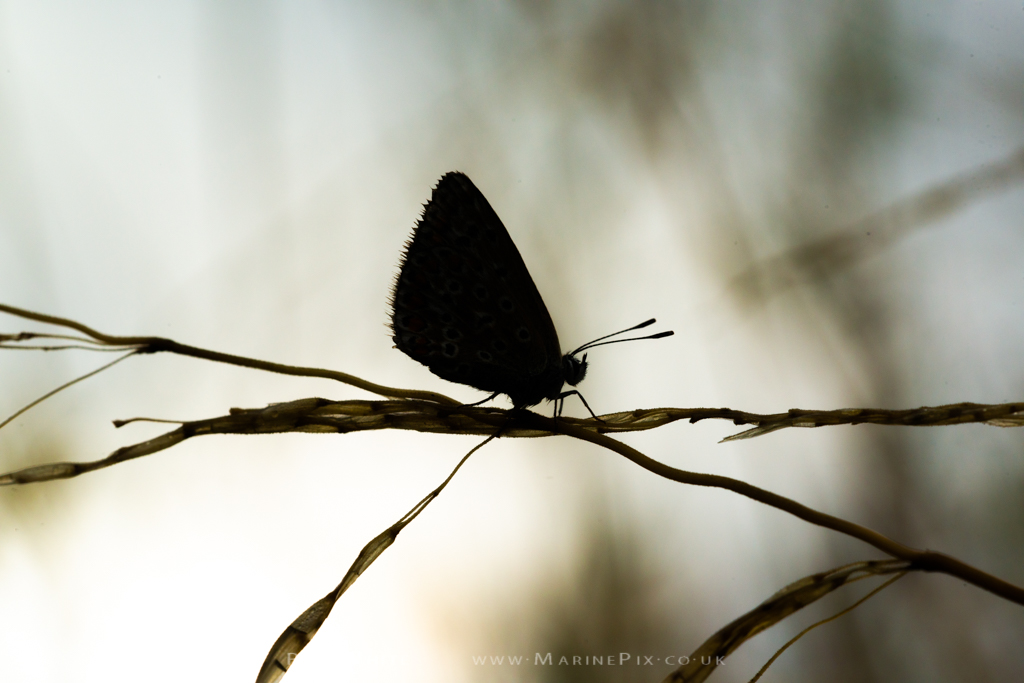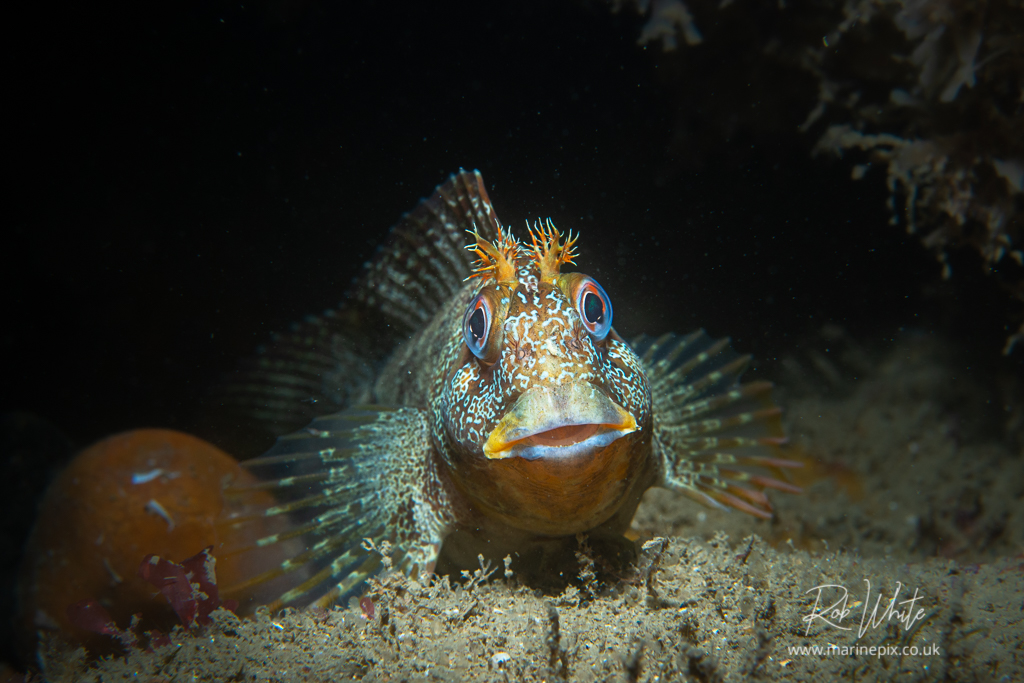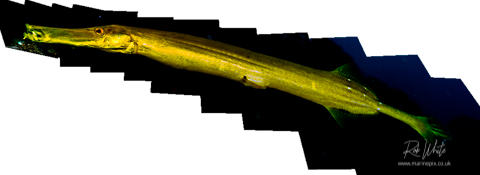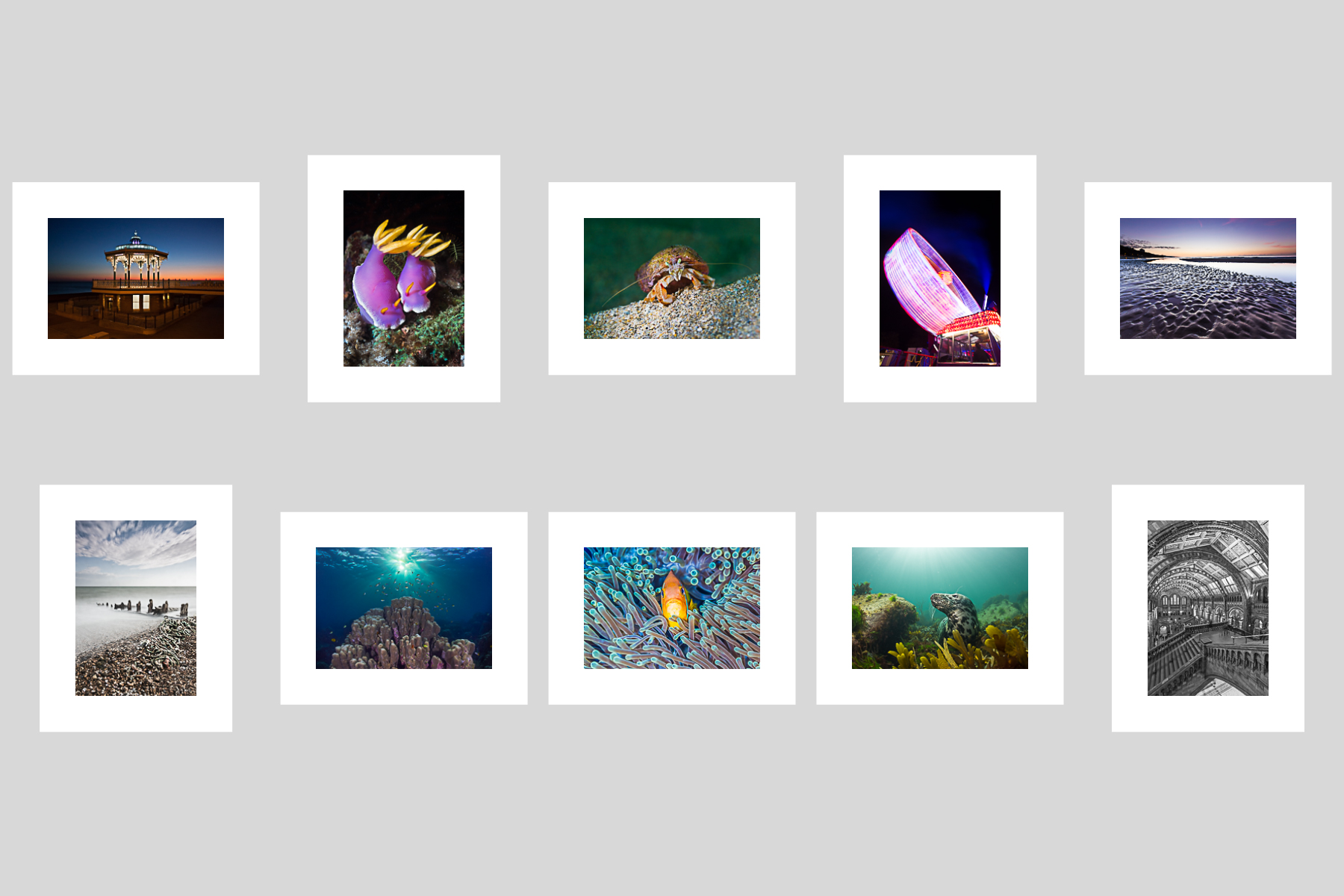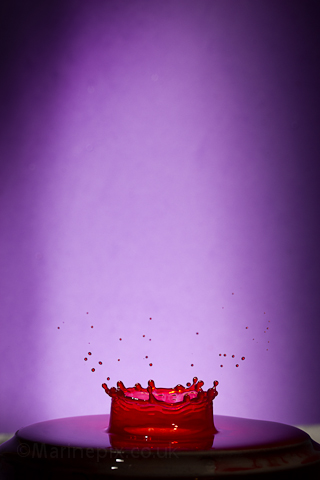

I sacrificed a couple of hours of much needed sleep to set up my drip-stand again, this time with the intention of playing around with the lighting a little more.
I set up one of the strobes I normally use underwater (Inon Z240) to fire at the same time as the flash unit (Canon 430EZ). I pointed the flash at the backgound and triggered the strobe using the fibre-optic cable which I’d usually use to attach it to my underwater housing.
Initially, I tried to balance the strobe on top of the two articulated arms used to position the light when it’s attached to my housing. Unfortunately, the strobe is heavy and the arms are light so after swearing at it a bit for being wobbly and off-balance, I decided to re-attach the whole thing to the housing in order to get a much sturdier base.
I attached a funnel type thing to the strobe which acted as a tiny circular snoot – creating a tiny circular patch of light wherever I pointed it. I then carefully positioned the housing and strobe so this snoot pointed directly where the splash would occur.
From that point on, it was fairly plain sailing! The power of the flash was a little too much relative to the power of the snooted strobe so I will aim to correct that in a future exercise. I’m also keen to try lighting the background which should ensure I get a more natural vignette (the black edges round the image) – In the image here, the left hand side of the vignette is something I added artifically to match the one already appearing on the right.
I got several new types of image but before I could start changing things further, a wire came loose on my electronic trigger kit! With my resident engineer unavailable, I packed up for the night. Once the thing is mended, I’ll be back!
I’ve Added This And Another New Image To My Liquid Art Gallery

